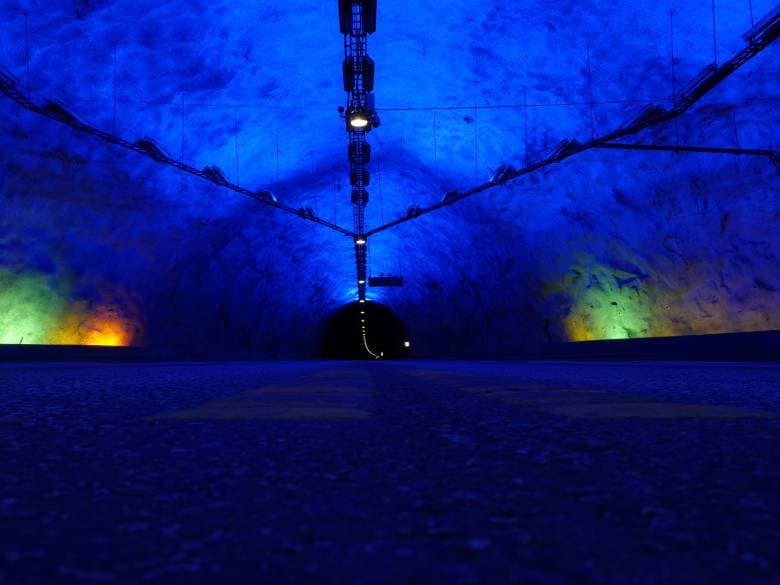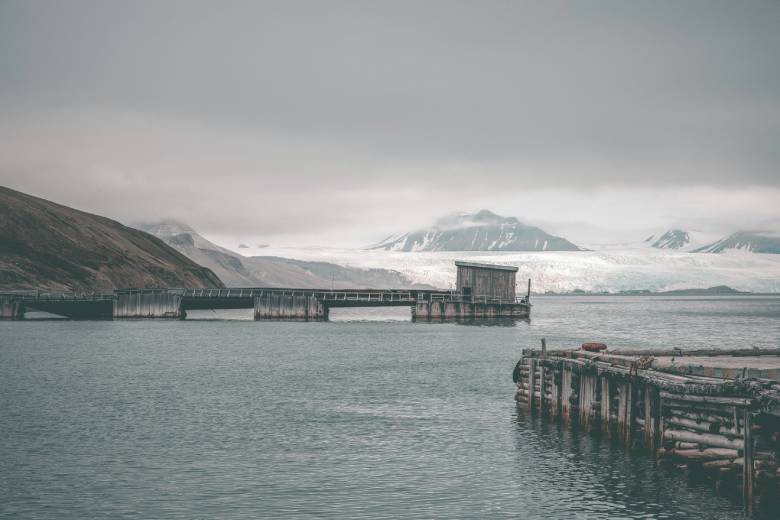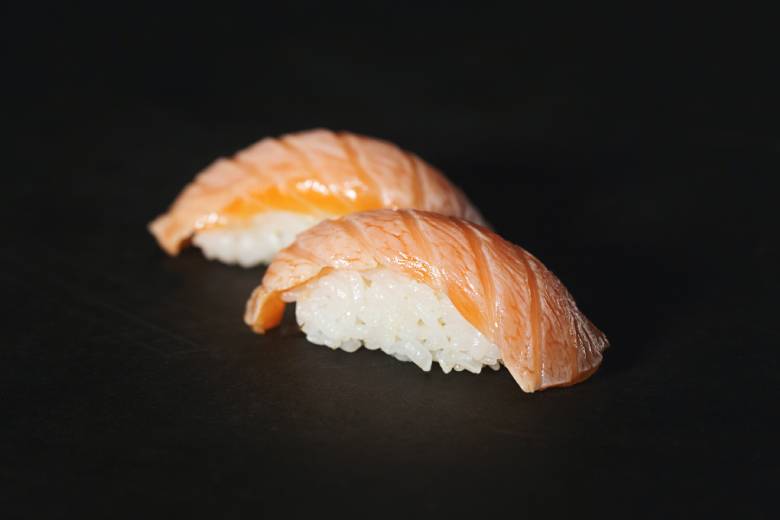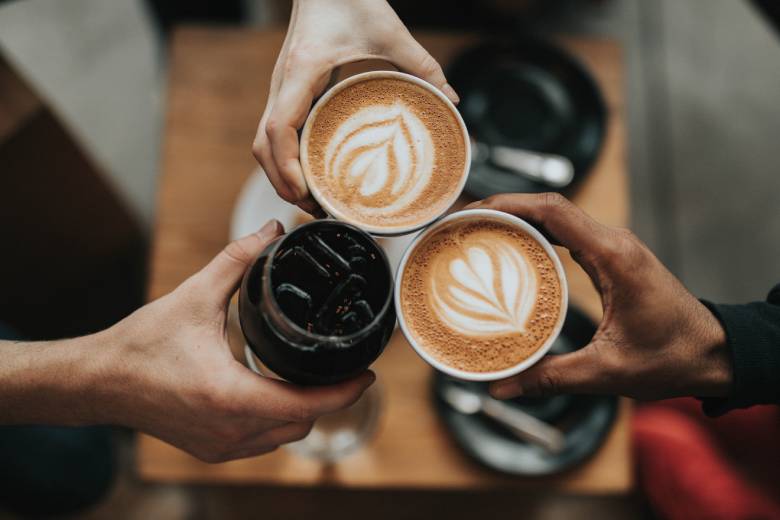Norway explained: 17 interesting things you never knew about Norway

Norway is an amazing country. From its awe-inspiring fjords to the magical Aurora Borealis, the list of reasons why millions of people visit it each year is quite long. In this article, we'll add 17 more – although less well-known – reasons to fuel your wanderlust.
A lot of people fall in love with Norway at first sight. What's not to love about a country with a generous welfare state, amazing nature, and world-renowned cultural heritage, right?
However, in case the classics – the natural attractions, the culture, the cleanliness and safety, and the (sea)food - aren't enough to sell you on Norway, here are 17 things you (probably) didn't know about the country that just might turn you into a fan.
1. Norway knights penguins and gives them positions in the military
The story started in 1972 when Norway's King's Guard adopted a penguin at the Edinburgh Zoo in Scotland, which they often toured during visits to the Edinburgh Military Tattoo, a well-known military music event.
In 1972, lieutenant Nils Egelien selected a penguin to serve as the guard's mascot. The penguin was then made an honorary member of the King's Guard and named Nils Olav - after the lieutenant himself and Norway's king at the time, Olav V.
After the penguin's death, another one took his place, name, and rank. This tradition has been going on for quite some time, and several penguins have served in the role.
In 2008, penguin Nils Olav - an honorary colonel-in-chief at the time - was knighted for his service and exemplary conduct.
2. Norway gives equal pay to male and female footballers
In 2018, Norway implemented equal compensation for male and female footballers representing the country's national teams.
The decision, announced by the Norwegian Football Association (NFF), was made in 2017. At the time, the men's team was remunerated from a pot of around 6.55 million kroner, which was more than twice as much as the women's team allocation.
Both allocations were set to roughly six million kroner for 2018. The transition has been funded in part by the men's team, who agreed to give up 550,000 kroner from their own allocation.

Pictured is Jan Mayen island. Photo by Alena Vavrdova on Unsplash
3. Norway has an active volcano?
If the fact that Norway has an active volcano surprised you, then you're in for a treat. The country has not one but two active volcanoes!
One is located on the island of Jan Mayen and is named Beerenberg. The other, named the Haakon Mosby mud volcano, is much harder to find, as it sits at the bottom of the ocean.
The Jan Mayen island is located about 1,000 kilometres west of mainland Norway and 550 kilometres northeast of Iceland. The Beerenberg volcano last erupted in 1985. As the Norwegian Polar Institute points out on its website, there is a constant threat of new eruptions and earthquakes at Beerenberg.
The Haakon Mosby mud volcano is a unique volcano in the Barents Sea, discovered in 1989 by researchers at the University of Bergen. The volcano was found at a depth of 1,300 meters.
4. Norway has a serious obsession with trolls
Norway has a love affair with the mythical beings known as "trolls" that goes back hundreds of years.
Trolls are omnipresent in Nordic folklore, and the term itself usually refers to multiple types of human-like beings, rooted in Norse mythology.
Regardless of whether you're looking at a list of the country's top tourist attractions (from mountaintops to famous rock formations, such as Trolltunga) or browsing the lineups of troll figurines and merchandise at one of the numerous gift shops at Bryggen in Bergen, you'll find trolls all over Norway.
Trolls are considered an essential part of Norway's cultural heritage, according to the state-funded guide Visit Norway, and Norwegians have a special place in their hearts for these fairly-tale creatures.
5. One of the horniest countries in the world?
According to a global sex survey carried out in 2017 for Orgasm Day, Norway came out on top when it comes to the number of orgasms people can have in a day.
For a nation with a reputation for reservedness, it seems the Norwegians are blessed with quite the sex drive.
The survey showed that 35 percent of Norwegians claim to climax at least once a day.
Furthermore, the survey also showed that Norwegians are in second place when it comes to the list of the noisiest nations in bed.
That's one way of keeping the winter cold and silence at bay...
6. Which animal is Norway's national symbol?
Norway has several national animals. However, its national royal animal is the lion, found on its royal banner - and many coats of arms showcased around the country.
Why does Norwegian royalty use a lion in its coat of arms if there are no such animals in the country?
One must dig into the country's royal history to find the answer. Norway's coat of arms has been officially used since the 13th century when lions were popular symbols in northern Europe.
At the time, they symbolised pride, courage, and strength.

In the recently released 2022 edition, Norway was ranked eighth globally in terms of happiness. Photo by Vinicius Wiesehofer on Unsplash
7. One of the happiest countries in the world
During the last decade, Norwegians have continuously been ranked among the happiest people on Earth - at least if one is to trust the World Happiness Report.
The report is published by the UN Sustainable Development Solutions Network, and it includes global survey data from people in about 150 countries.
In the recently released 2022 edition, Norway was ranked eighth globally in terms of happiness. It was rated 7.365 out of 10 for happiness, while the global average was 5.53 in 2021.
Analysed categories involved how much better life is in a given country compared to those with bad living conditions; perception of corruption in a country; generosity; freedom to make life choices; healthy life expectancy; social support; and GDP per capita.
8. Norway is a world leader in terms of electric cars (per capita)
Norway, a country with a population of around 5.4 million people, has the world's highest proportion of electric vehicles per capita.
In 2022, 138,265 new electric cars were sold, representing 79.3 percent of total passenger car sales, according to the Norwegian Road Federation (OFV).
In doing so, Norway beat its previous record of 64.5 percent set in 2021. Tesla was the most popular brand in 2022, topping the list with a 12.2 percent market share.
9. The Norwegian island of Svalbard has more bears than people
As of 2012, around 2642 people were living in Svalbard. There are around 3,000 polar bears in the Svalbard archipelago, which means that there are more bears than people in the area!
Polar bear sightings usually occur on the surrounding islands, but the state-funded guide Visit Svalbard states that people should be prepared to encounter polar bears anywhere in Svalbard year-round.
Also, the guide recommends that any visitor secures a local guide with a firearm when leaving the island settlements. Yikes!
10. Norway invented skiing
To no one's surprise, Norway is considered the birthplace of modern skiing. The oldest evidence of skiing in the country - a Rødøy carving of a skier with a pole - has been dated to 5,000 BCE.
While there is older evidence depicting skis in other countries, what is considered skiing today is clearly linked with Norway - and Scandinavia.
Furthermore, multiple ancient skis have been discovered in Scandinavia (with one that could be around 6,500 years old!), adding to Norway's claim.
Skiing is also featured in less reliable but culturally important Norse sagas, which are more than 1,000 years old.

Japan has a long and proud tradition of eating raw fish that goes back centuries. Photo by Luigi Pozzoli on Unsplash
11. Norway gave Japan the idea of using salmon in sushi?
Ready for a really fun fact?
While salmon is closely associated with sushi nowadays, a few decades ago, that wasn't the case. Japan has a long and proud tradition of eating raw fish that goes back centuries. Yet, salmon was not a part of it until relatively recently.
Things changed, and salmon made its way into Japan's sushi culture, thanks to a major Norwegian marketing campaign carried out by seafood exporters.
The campaign's success made farmed Atlantic salmon from Norway a popular staple in Japanese sushi cuisine.
12. Norway, home of brown cheese
Norway is home to a lot of fascinating foods and dishes. The Local has covered many of them in previous articles.
However, there is a staple that visitors tend to find quite interesting - brown cheese (brunost in Norwegian).
While it technically isn't cheese - it's a byproduct - its shape and uses do fit the bill. Norwegians tend to eat it in sandwiches or on toast, and its caramelly flavour makes it a breakfast favourite!
Brunost is made by boiling out the water from goat milk whey, which ends up caramelising the sugar. If you leave the resulting substance to cool down, it will take the form of the famed "brown cheese."
13. Norway has its own Statue of Liberty (in Visnes on Karmøy island)?
While the Statue of Liberty in the US is a globally recognised attraction, few people know that it was crafted from copper extracted from a mine in Visnes, a village in Norway.
The Visnes copper mine, which opened in 1865, was a large and advanced mine that saw its zenith during the final decades of the 19th century.
A French engineer named Charles Defrance had a key role in the mine operation, and he is often credited with securing the Norwegian-French connection, which resulted in one of France's most famous gifts to the US, the Statue of Liberty.
In 1986, the copper from the Statue of Liberty was tested, and the analysis showed that it matched the copper from Visnes. A small statue replicating the Statue of Liberty was constructed in Vinses, on Karmøy island, to mark the occasion.

A Euromonitor 2013 report showed Norwegians consume around 7.2 kilograms of coffee per year per capita. Photo by Nathan Dumlao on Unsplash
14. Norway is a nation of extreme coffee lovers
Coffee is a huge part of living in Norway - despite its ridiculous price compared to many other European countries.
While the prices don't facilitate carefree coffee consumption or binge drinking in cafes (as might be the case in southeastern Europe), Norwegians are very serious about their coffee.
A Euromonitor 2013 report showed Norwegians consume around 7.2 kilograms of coffee per year per capita, which ranked them the second world over - surpassed only by the Fins in the list in question.
According to other, more recent reports, it seems Norwegians have maintained their spot on the top list of coffee drinkers.
Historically speaking, coffee drinking began securing ground in the country in the 19th century after Norway started trading fish for beans from America.
15. Norway donates a Christmas tree to the UK every year
In a show of gratitude for the support it received in World War Two, for over 75 years, Norway has been gifting the UK a Christmas tree, traditionally displayed in Trafalgar Square during the festive period.
The people of Norway gift the UK a roughly 20-metre tall Norwegian Spruce, which is often battered as it travels from Norway to the UK (though it is sent off in perfect condition), making it a target of a lot of jokes - especially on social media.
While the annual tradition dates back seven decades, the first Christmas tree was gifted to the UK in 1942.
Banner ad
16. Norwegians read more (per capita) than any other population in the world
Norwegians enjoy reading a good book – especially during the holidays!
As studies show time and time again, Norway is a nation of avid readers.
The Bokundersøkelsen 2010, conducted by Norway's publisher associations, showed that 90 percent of all Norwegian men and 97 percent of Norwegian women read at least one or more books the previous year. Quite impressive!
There is a well-established tradition of reading thrillers during Easter, which helps fuel the country's love of books.
17. Norway has the world's longest road tunnel
The Lærdal tunnel, the longest road tunnel in the world, is located in Norway.
As the state-funded guide Visit Norway proudly states, the road, which spans over a whopping 24.5 kilometres, links Aurland and Lærdal, providing a ferry-free connection between Norway's two biggest cities - Oslo and Bergen.
The Lærdal tunnel opened in November 2000. The tunnel lighting is quite remarkable - every six kilometres, there is a widening, and these wide, rocky chambers are fitted with special lighting, making the trip through the tunnel a memorable experience.
Comments
See Also
A lot of people fall in love with Norway at first sight. What's not to love about a country with a generous welfare state, amazing nature, and world-renowned cultural heritage, right?
However, in case the classics – the natural attractions, the culture, the cleanliness and safety, and the (sea)food - aren't enough to sell you on Norway, here are 17 things you (probably) didn't know about the country that just might turn you into a fan.
1. Norway knights penguins and gives them positions in the military
The story started in 1972 when Norway's King's Guard adopted a penguin at the Edinburgh Zoo in Scotland, which they often toured during visits to the Edinburgh Military Tattoo, a well-known military music event.
In 1972, lieutenant Nils Egelien selected a penguin to serve as the guard's mascot. The penguin was then made an honorary member of the King's Guard and named Nils Olav - after the lieutenant himself and Norway's king at the time, Olav V.
After the penguin's death, another one took his place, name, and rank. This tradition has been going on for quite some time, and several penguins have served in the role.
In 2008, penguin Nils Olav - an honorary colonel-in-chief at the time - was knighted for his service and exemplary conduct.
2. Norway gives equal pay to male and female footballers
In 2018, Norway implemented equal compensation for male and female footballers representing the country's national teams.
The decision, announced by the Norwegian Football Association (NFF), was made in 2017. At the time, the men's team was remunerated from a pot of around 6.55 million kroner, which was more than twice as much as the women's team allocation.
Both allocations were set to roughly six million kroner for 2018. The transition has been funded in part by the men's team, who agreed to give up 550,000 kroner from their own allocation.

3. Norway has an active volcano?
If the fact that Norway has an active volcano surprised you, then you're in for a treat. The country has not one but two active volcanoes!
One is located on the island of Jan Mayen and is named Beerenberg. The other, named the Haakon Mosby mud volcano, is much harder to find, as it sits at the bottom of the ocean.
The Jan Mayen island is located about 1,000 kilometres west of mainland Norway and 550 kilometres northeast of Iceland. The Beerenberg volcano last erupted in 1985. As the Norwegian Polar Institute points out on its website, there is a constant threat of new eruptions and earthquakes at Beerenberg.
The Haakon Mosby mud volcano is a unique volcano in the Barents Sea, discovered in 1989 by researchers at the University of Bergen. The volcano was found at a depth of 1,300 meters.
4. Norway has a serious obsession with trolls
Norway has a love affair with the mythical beings known as "trolls" that goes back hundreds of years.
Trolls are omnipresent in Nordic folklore, and the term itself usually refers to multiple types of human-like beings, rooted in Norse mythology.
Regardless of whether you're looking at a list of the country's top tourist attractions (from mountaintops to famous rock formations, such as Trolltunga) or browsing the lineups of troll figurines and merchandise at one of the numerous gift shops at Bryggen in Bergen, you'll find trolls all over Norway.
Trolls are considered an essential part of Norway's cultural heritage, according to the state-funded guide Visit Norway, and Norwegians have a special place in their hearts for these fairly-tale creatures.
5. One of the horniest countries in the world?
According to a global sex survey carried out in 2017 for Orgasm Day, Norway came out on top when it comes to the number of orgasms people can have in a day.
For a nation with a reputation for reservedness, it seems the Norwegians are blessed with quite the sex drive.
The survey showed that 35 percent of Norwegians claim to climax at least once a day.
Furthermore, the survey also showed that Norwegians are in second place when it comes to the list of the noisiest nations in bed.
That's one way of keeping the winter cold and silence at bay...
6. Which animal is Norway's national symbol?
Norway has several national animals. However, its national royal animal is the lion, found on its royal banner - and many coats of arms showcased around the country.
Why does Norwegian royalty use a lion in its coat of arms if there are no such animals in the country?
One must dig into the country's royal history to find the answer. Norway's coat of arms has been officially used since the 13th century when lions were popular symbols in northern Europe.
At the time, they symbolised pride, courage, and strength.

7. One of the happiest countries in the world
During the last decade, Norwegians have continuously been ranked among the happiest people on Earth - at least if one is to trust the World Happiness Report.
The report is published by the UN Sustainable Development Solutions Network, and it includes global survey data from people in about 150 countries.
In the recently released 2022 edition, Norway was ranked eighth globally in terms of happiness. It was rated 7.365 out of 10 for happiness, while the global average was 5.53 in 2021.
Analysed categories involved how much better life is in a given country compared to those with bad living conditions; perception of corruption in a country; generosity; freedom to make life choices; healthy life expectancy; social support; and GDP per capita.
8. Norway is a world leader in terms of electric cars (per capita)
Norway, a country with a population of around 5.4 million people, has the world's highest proportion of electric vehicles per capita.
In 2022, 138,265 new electric cars were sold, representing 79.3 percent of total passenger car sales, according to the Norwegian Road Federation (OFV).
In doing so, Norway beat its previous record of 64.5 percent set in 2021. Tesla was the most popular brand in 2022, topping the list with a 12.2 percent market share.
9. The Norwegian island of Svalbard has more bears than people
As of 2012, around 2642 people were living in Svalbard. There are around 3,000 polar bears in the Svalbard archipelago, which means that there are more bears than people in the area!
Polar bear sightings usually occur on the surrounding islands, but the state-funded guide Visit Svalbard states that people should be prepared to encounter polar bears anywhere in Svalbard year-round.
Also, the guide recommends that any visitor secures a local guide with a firearm when leaving the island settlements. Yikes!
10. Norway invented skiing
To no one's surprise, Norway is considered the birthplace of modern skiing. The oldest evidence of skiing in the country - a Rødøy carving of a skier with a pole - has been dated to 5,000 BCE.
While there is older evidence depicting skis in other countries, what is considered skiing today is clearly linked with Norway - and Scandinavia.
Furthermore, multiple ancient skis have been discovered in Scandinavia (with one that could be around 6,500 years old!), adding to Norway's claim.
Skiing is also featured in less reliable but culturally important Norse sagas, which are more than 1,000 years old.

11. Norway gave Japan the idea of using salmon in sushi?
Ready for a really fun fact?
While salmon is closely associated with sushi nowadays, a few decades ago, that wasn't the case. Japan has a long and proud tradition of eating raw fish that goes back centuries. Yet, salmon was not a part of it until relatively recently.
Things changed, and salmon made its way into Japan's sushi culture, thanks to a major Norwegian marketing campaign carried out by seafood exporters.
The campaign's success made farmed Atlantic salmon from Norway a popular staple in Japanese sushi cuisine.
12. Norway, home of brown cheese
Norway is home to a lot of fascinating foods and dishes. The Local has covered many of them in previous articles.
However, there is a staple that visitors tend to find quite interesting - brown cheese (brunost in Norwegian).
While it technically isn't cheese - it's a byproduct - its shape and uses do fit the bill. Norwegians tend to eat it in sandwiches or on toast, and its caramelly flavour makes it a breakfast favourite!
Brunost is made by boiling out the water from goat milk whey, which ends up caramelising the sugar. If you leave the resulting substance to cool down, it will take the form of the famed "brown cheese."
13. Norway has its own Statue of Liberty (in Visnes on Karmøy island)?
While the Statue of Liberty in the US is a globally recognised attraction, few people know that it was crafted from copper extracted from a mine in Visnes, a village in Norway.
The Visnes copper mine, which opened in 1865, was a large and advanced mine that saw its zenith during the final decades of the 19th century.
A French engineer named Charles Defrance had a key role in the mine operation, and he is often credited with securing the Norwegian-French connection, which resulted in one of France's most famous gifts to the US, the Statue of Liberty.
In 1986, the copper from the Statue of Liberty was tested, and the analysis showed that it matched the copper from Visnes. A small statue replicating the Statue of Liberty was constructed in Vinses, on Karmøy island, to mark the occasion.

14. Norway is a nation of extreme coffee lovers
Coffee is a huge part of living in Norway - despite its ridiculous price compared to many other European countries.
While the prices don't facilitate carefree coffee consumption or binge drinking in cafes (as might be the case in southeastern Europe), Norwegians are very serious about their coffee.
A Euromonitor 2013 report showed Norwegians consume around 7.2 kilograms of coffee per year per capita, which ranked them the second world over - surpassed only by the Fins in the list in question.
According to other, more recent reports, it seems Norwegians have maintained their spot on the top list of coffee drinkers.
Historically speaking, coffee drinking began securing ground in the country in the 19th century after Norway started trading fish for beans from America.
15. Norway donates a Christmas tree to the UK every year
In a show of gratitude for the support it received in World War Two, for over 75 years, Norway has been gifting the UK a Christmas tree, traditionally displayed in Trafalgar Square during the festive period.
The people of Norway gift the UK a roughly 20-metre tall Norwegian Spruce, which is often battered as it travels from Norway to the UK (though it is sent off in perfect condition), making it a target of a lot of jokes - especially on social media.
While the annual tradition dates back seven decades, the first Christmas tree was gifted to the UK in 1942.
| Banner ad |
16. Norwegians read more (per capita) than any other population in the world
Norwegians enjoy reading a good book – especially during the holidays!
As studies show time and time again, Norway is a nation of avid readers.
The Bokundersøkelsen 2010, conducted by Norway's publisher associations, showed that 90 percent of all Norwegian men and 97 percent of Norwegian women read at least one or more books the previous year. Quite impressive!
There is a well-established tradition of reading thrillers during Easter, which helps fuel the country's love of books.
17. Norway has the world's longest road tunnel
The Lærdal tunnel, the longest road tunnel in the world, is located in Norway.
As the state-funded guide Visit Norway proudly states, the road, which spans over a whopping 24.5 kilometres, links Aurland and Lærdal, providing a ferry-free connection between Norway's two biggest cities - Oslo and Bergen.
The Lærdal tunnel opened in November 2000. The tunnel lighting is quite remarkable - every six kilometres, there is a widening, and these wide, rocky chambers are fitted with special lighting, making the trip through the tunnel a memorable experience.
Join the conversation in our comments section below. Share your own views and experience and if you have a question or suggestion for our journalists then email us at [email protected].
Please keep comments civil, constructive and on topic – and make sure to read our terms of use before getting involved.
Please log in here to leave a comment.